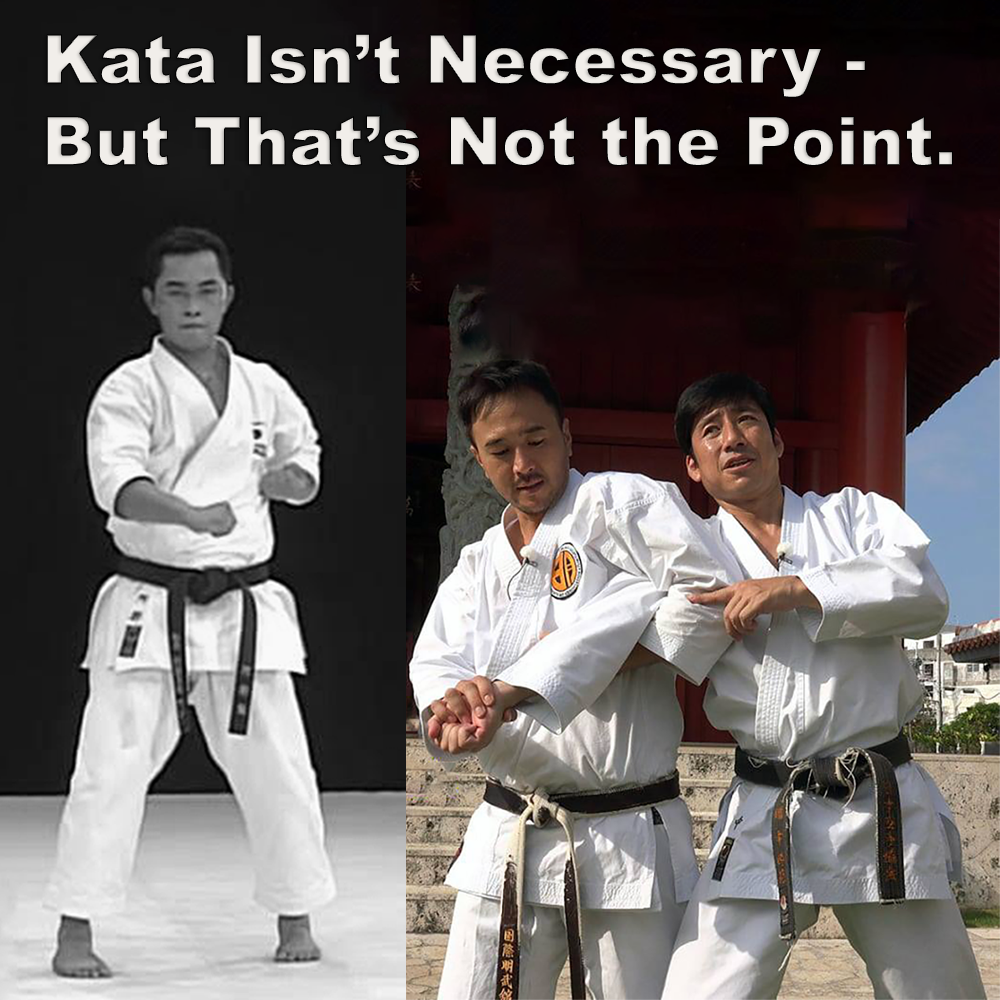
(Approx 2 minute 45 second read)
Here we go again. Every time I write about the benefits of kata – really trying to help people understand what it is and how it works – I get a troll in the comments. This time, he proudly declared the virtues of his “street-real” jiu-jitsu and MMA training.
.
“Stop with the crap,” he said. “Go do some real training.”
.
Groundbreaking stuff. Next, he’ll be telling me to learn how to throw – because that’s missing from karate, right? Except… it isn’t. It’s there. Just not in the form he expects, and probably not in the way he’d understand.
.
Some people are just closed-minded, offering opinions about things they clearly haven’t taken the time to understand. And honestly, I’m not even sure what the point of his comment was. But I digress.
.
Let’s move on.
.
Of course, we don’t need kata today. There are plenty of ways to train – MMA, jiu-jitsu, kickboxing practitioners keep telling me this. And that’s fine. But that’s not the point. Kata isn’t a necessity – it’s a choice. And it’s what makes karate distinct. It’s not the kata’s fault people don’t understand it.
.
I get messages all the time from people who do want to understand. They feel like something’s missing from their training. Like me, many decades ago – I had that itch (it’s cleared up now, thanks for asking). I knew there was more. But staying closed-minded, like the troll above, just keeps them stuck where they are.
.
Here’s one of the biggest issues: people like him look at kata as if you’re supposed to use all of it, just as it appears – every movement, every sequence – as a literal fighting method. They see someone practicing a kata and think, “That would never work in a real fight.” And they’re right – if you try to use it that way.
.
But that’s not the point. It’s not about copying the surface. It’s about extracting the principles underneath. Things like balance, control, manipulation of space, posture, power generation, and more. You don’t use the kata – you use what it teaches you.
.
Wait – your method doesn’t have principles?
.
There’s a big difference between the original purpose of kata and what we often see it being used for today. It’s evolved. It’s become a form of art, of personal practice, even a kind of moving meditation.
.
That’s all fine – as long as you’re clear on the context.
.
And let’s talk about that context.
.
Kata is a bit like Shakespeare. You don’t need to study Hamlet to write a story, just like you don’t need kata to learn how to fight. But if you spend time with it, you’ll find structure, subtlety, and layers of meaning that can influence everything else you do. It might not be ‘modern’, but it offers something deeper – something reflective. You take what’s useful – and what’s universal – and you apply it.
.
That’s how principles work. Control, structure, awareness, body mechanics. These aren’t exclusive to karate. They’re human concepts. The vehicle might be kata – but the destination can be anywhere.
.
“Do some real training.” Right. I’ll just get on that. Next, he’ll be telling me to ‘try punching a bag’, as if we don’t do that already. It’s not even the comment – it’s the smug certainty that says more about him than anything else.
.
Engaging with people like that – people who just want to argue – is a waste of time. I gave him a chance to have a real conversation, but in the end, sometimes the best move is to just press delete.
.
No, kata isn’t essential. But it’s interesting. It’s valuable. And for those who care to look, you don’t fight with kata from beginning to end – but it can reveal things that cross boundaries – style, system, or era.
.
And that, in itself, makes it worth keeping.
.
So stop commenting on things you literally don’t understand; it only makes you look like a fool.
.
.
Written by Adam Carter
.
.
Photo Credit: Left courtesy of shitokai – right courtesy of Kuro-obi world: Naka-sensei and Yagi-sensei
